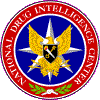ARCHIVED
![]() To Contents
To Previous Page To Next Page
To Publications Page To
Home Page
To Contents
To Previous Page To Next Page
To Publications Page To
Home Page

|
National Drug Intelligence Center West Virginia Drug Threat Assessment August 2003 Diverted PharmaceuticalsDiverted pharmaceuticals pose a serious drug threat to West Virginia, rivaling that of cocaine in many areas of the state. Diverted pharmaceuticals such as OxyContin, Vicodin, and Dilaudid are readily available, commonly abused, and frequently associated with property crimes throughout the state. Further, treatment data indicate that there were more pharmaceutical-related treatment admissions in 2000 than admissions for any illicit drug except marijuana. Caucasian local independent dealers, abusers, and loosely organized criminal groups are the principal transporters and distributors of diverted pharmaceuticals in West Virginia. Diverted pharmaceuticals typically are sold from private residences, bars, and at open-air drug markets.
AbuseTreatment data reflect a high level of pharmaceutical abuse in West Virginia. In 2000 there were more pharmaceutical-related treatment admissions than admissions for any illicit drug except marijuana; the number increased from 895 in 1998 to 1,274 in 2000, according to the West Virginia Department of Health and Human Resources. (See Table 5.) Men and women were equally likely to be treated for pharmaceutical abuse. The highest number of treatment admissions in 2000 was related to the abuse of opiates/synthetics (see text box), methadone, other sedatives, and benzodiazepines (Valium and Xanax). Anecdotal reporting from treatment providers throughout West Virginia indicates that pharmaceutical abuse is endemic and a way of life for many West Virginians, with members of various socioeconomic classes and age groups abusing these drugs.
OxyContin continues to be one of the most widely abused diverted pharmaceuticals in West Virginia. Trends in abuse vary throughout the state. According to federal, state, and local law enforcement officials, OxyContin abuse is increasing in Bridgeport and Morgantown as well as in southern West Virginia. Abuse levels are decreasing in Weirton and Welch. Law enforcement officials attribute the decrease, at least in part, to proactive enforcement efforts, which have limited availability of the drug. However, limited availability has caused many OxyContin abusers in these areas to switch to heroin and other opiate-based pharmaceuticals. Methadone increasingly is abused in West Virginia. The number of treatment admissions for nonprescription methadone increased dramatically from 15 in 1999 to 254 in 2000. Law enforcement officials in Charleston, Gilbert, Huntington, Parkersburg, Point Pleasant, South Charleston, Vienna, and Welch report that methadone is abused in their jurisdictions. Methadone is a synthetically manufactured, long-lasting opiate, usually taken orally, which causes pain-killing and depressant effects that can last 4 to 6 hours. Methadone also reduces drug cravings and blocks withdrawal symptoms for 24 to 72 hours and commonly is used to treat individuals dependent on heroin and other opioids. In a treatment program, methadone usually is taken orally in syrup form and drunk with a cordial or fruit juice.
AvailabilityDiverted pharmaceuticals are readily available throughout West Virginia. Of the 28 law enforcement respondents to the NDTS 2002 in West Virginia who rated the level of diverted pharmaceutical availability in their jurisdictions, 22 indicated that availability was high. In 2002 diverted OxyContin sold for $1 to $1.25 per milligram; hydrocodone products such as Lortab, Lorcet, and Vicodin sold for $4 to $6 per tablet; generic hydrocodone products sold for $3 per tablet; Xanax sold for $2 per tablet; and Valium sold for $3 per tablet, according to the DEA Charleston Resident Office. Offenses involving other opiates (Dilaudid, Lortab, morphine, OxyContin, Percocet) increased in frequency and exceeded the number of offenses involving powdered cocaine in 2002, the first time since 1999. The West Virginia Division of Criminal Justice Services reported that 12.5 percent (193 offenses) of the 1,538 drug-specific offenses reported for 2002 involved other opiates. The greatest number of charges involving other opiates was from Mercer (36) and Nicholas (30) counties.
ViolenceAbusers of diverted pharmaceuticals in West Virginia normally do not commit violent crimes such as robbery; however, many abusers commit property crimes such as theft and burglary to support their drug habits. Bridgeport Police Department officials report that most shoplifting crimes in the area are committed by abusers who trade stolen merchandise for diverted pharmaceuticals.
TransportationMost diverted pharmaceuticals available in West Virginia are obtained in the state via common diversion techniques; however, diverted pharmaceuticals also are obtained from areas in Kentucky, Maryland, North Carolina, Ohio, Tennessee, and Mexico. Caucasian local independent dealers, abusers, and loosely organized criminal groups are the principal transporters of diverted pharmaceuticals into the state, via private vehicles and, to a lesser extent, by package delivery services.
DistributionCaucasian local independent dealers, abusers, and loosely organized criminal groups are the principal distributors of diverted pharmaceuticals in West Virginia. These dealers, abusers, and criminal groups typically distribute diverted pharmaceuticals from private residences and bars and at open-air markets, among other locations.
|
|||||||||||||||||||||||||||||||||||||||||||||||
End of page.